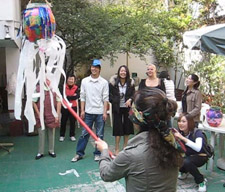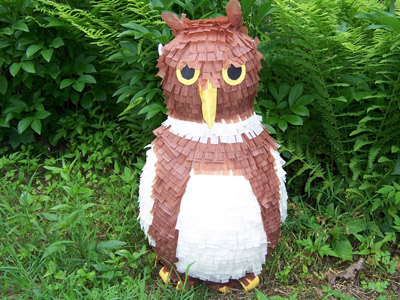Perhaps you’ve tried breaking open a piñata at a birthday party, but did you know that this paper mache object has roots in religion? The Spanish brought the tradition of piñatas to Mexico, to help transmit Catholicism.
Angelica Ortiz grew up in Mexico City. She remembers watching her uncles make piñatas each December. During the nine evenings of Advent, people gathered in the street holding candles to walk and sing songs of Las Posadas. Each night, a different family hosted a party, ending with the breaking of a piñata.
Piñata is originally an Italian word meaning clay pot. Traditional piñatas in Mexico are still made with a clay pot interior, rather than a balloon. The piñata is covered in shiny paper and fitted with a seven-peaked star, symbolizing the seven deadly sins. “The idea,” Angelica explains, “was to break it. Or hit is as hard as possible so evil and the bad sins will be gone. In Mexico, they filled them with fruit and nuts, not candy.”
When it’s time to try to break the piñata at children’s parties, Angela sings the song traditionally sung in Mexico. “It’s very important,” she says, laughing. “The lyrics indicate 1-2-3 chances at striking the piñata; once the singing stops, your turn is over.”
Come see Angelica making piñatas in the folk craft area of the Lowell Folk Festival on July 26 and 27, 2014



